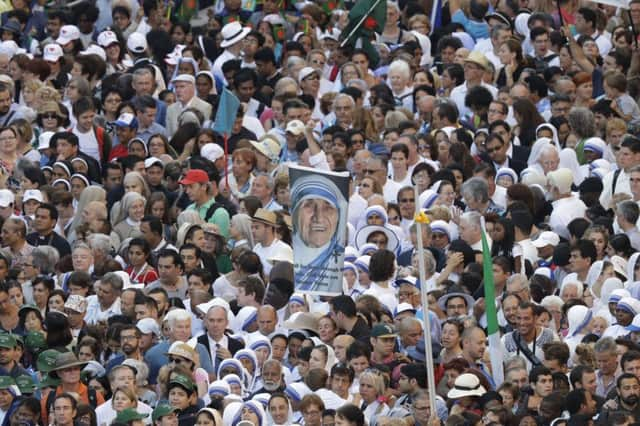St. Teresa of Calcutta was a model of holiness: Archbishop Martin


Archbishop Martin was speaking following the canonisation of Mother Teresa in Rome, in a ceremony attended by Bishop Donal McKeown and dozens of people from the diocese.
Speaking in his homily delivered in Armagh, the Primate of All Ireland said: “I am grateful to have met many good and saintly people who ‘do mercy’.
Advertisement
Hide AdAdvertisement
Hide Ad“No doubt you too can think of women and men who care for the sick and suffering in our community, who feed the hungry, clothe the naked, welcome the stranger - and often do so quietly behind the scenes, without seeking any recognition or reward.
“In the canonisation of Mother Teresa, the Church is offering us a modern day ‘model of holiness’ or ‘icon of mercy’ - someone we can look to as an example and an encouragement for ourselves to ‘do mercy’, to ‘be mercy’, especially for those who are most rejected or forgotten in our world.”
Archbishop Martin said there were, for him, three particular ways in which Mother Teresa illustrated how to show and become mercy in today’s world.
“Firstly, she was inspired to ‘do something beautiful for God’. ‘I do it for Him’, she often said. “Being merciful begins with a desire to be a better person and to offer our gifts and talents to God who loved us first.
Advertisement
Hide AdAdvertisement
Hide Ad“Secondly, Mother Teresa opened herself up completely to what God wanted of her. In fact she once made a vow never to refuse God anything that God wanted of her. She simply wanted to be ‘like a little pencil in God’s hands’ and allow God to ‘write mercy’ into the world through her. Being merciful is about allowing God to work his miracle of mercy through us, about not getting in the way of what God wants of us, but being open to letting God use us as God’s instruments of love, peace, goodness, generosity, forgiveness, encouragement to others.
“Thirdly, Mother Teresa was able to ‘see the face of Jesus’ in those to whom she brought God’s love and mercy.
“She saw the face of Jesus in the poorest of the poor, those with AIDS, those with terrible disfigurements and disease, those abandoned and dying on the streets from malnutrition.
“She once said: ‘When I wash the face of lepers, I am washing the face of Jesus himself’.
Advertisement
Hide AdAdvertisement
Hide Ad“It did not matter to her if the person in need was Catholic or other Christian or Hindu or Muslim.”
For her Calcutta was everywhere - she even joked that if there are poor people on the moon, ‘we will go to the moon too’.
“She teaches us that when we ‘do mercy’ it opens up for us a window through which we can see the face of Christ in all those who suffer in the world.”
Archbishop Martin added: “In the coming three weeks I invite you to pray with me in thanksgiving for people you know who put the corporal and spiritual works of mercy into practice in their daily lives.”